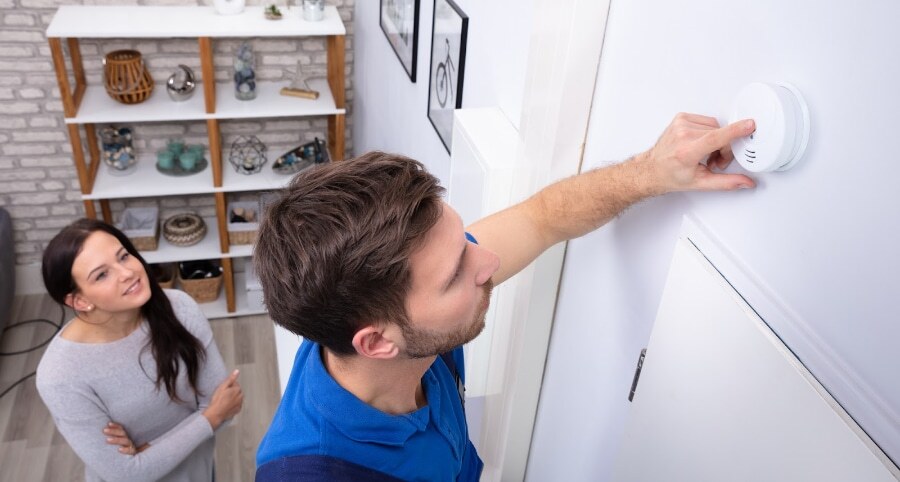Where to install carbon monoxide detectors in your Baltimore home

Carbon monoxide is different from other dangers homeowners face as you won’t detect it by smell or sight. Despite the fact it’s not detectable with your senses like smoke, fire, or flooding, you may still effectively and easly shield your family with CO detectors. Find where to install carbon monoxide detectors in your Baltimore residence and investigate the perks of incorporating them in your comprehensive security plan.
Where will you find CO gas?
Owing to its dearth of odor and color, carbon monoxide has acquired the nickname of the silent killer. It emerges as a result of an incomplete combustion of fuels in appliances like fireplaces, generators, gas stoves, and furnaces. Most households won’t encounter problems with their fuel-powered appliances if they maintain them regularly. But if you neglect maintenance or don’t have adequate ventilation, a collection of this potentially life-threatening gas can result.
Early indications of CO poisoning include nausea, vomiting, headaches, and dizziness. These typically occur at low levels of CO. Exposure to higher concentrations for a longer period can cause cardiopulmonary arrest and death.
Suggestions on where to install Baltimore carbon monoxide detectors
Every home ought to have at least one CO detector. Actually, you ought to place them on all floors, including basements where many fuel-burning appliances are often found. Use these suggestions on where to install Baltimore carbon monoxide detectors:
-
Install one within 10 feet of sleeping quarters. This location is vital, so install it here if you only opt for one CO detector.
-
You ought to have a carbon monoxide detector on all levels of your property, especially on floors with fuel-consuming appliances.
-
To avoid false alarms, install them at least 10 feet from causes of carbon monoxide, such as fireplaces. A bit of CO may be released when gas-burning appliances start up.
- Avoid installing beside windows and doors, as exterior air will lessen the unit’s usefulness.
-
Put CO detectors in areas above attached garages.
As you would with fire alarms, inspect your CO units regularly, keep them clean, and avoid unintentionally putting something next to them. As a general rule, replace your detectors every 5-6 years.
Improve safety by integrating CO detectors into your home’s security system
Present-day home security systems offer more possibilities than you’ve ever had before. In fact, you can integrate CO detectors and other safety devices right into your system. You and your monitoring experts will be notified whenever your device is triggered. This type of backup is valuable when you aren’t awakened by the alarm or if you’re not home.
Improve safety by integrating CO detectors into your home’s security system
Present-day home security systems offer more possibilities than you’ve ever had before. In fact, you can integrate CO detectors and other safety devices right into your system. You and your monitoring experts will be notified whenever your device is triggered. This type of backup is valuable when you aren’t awakened by the alarm or if you’re not home.
Request CO detectors with your Vivint smart home in Baltimore